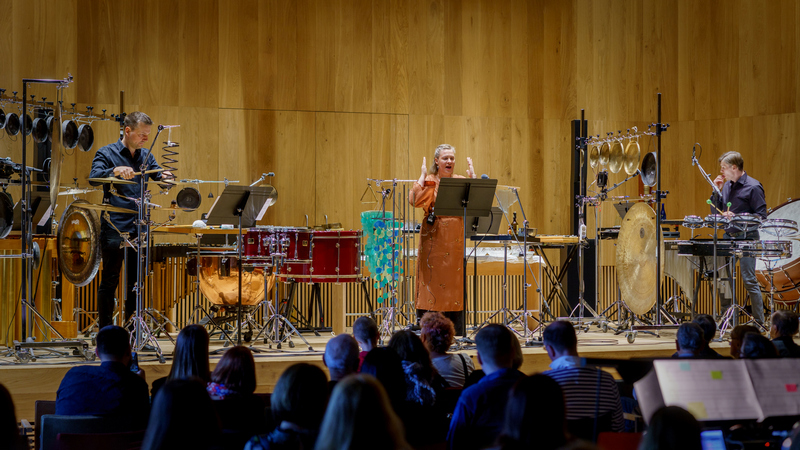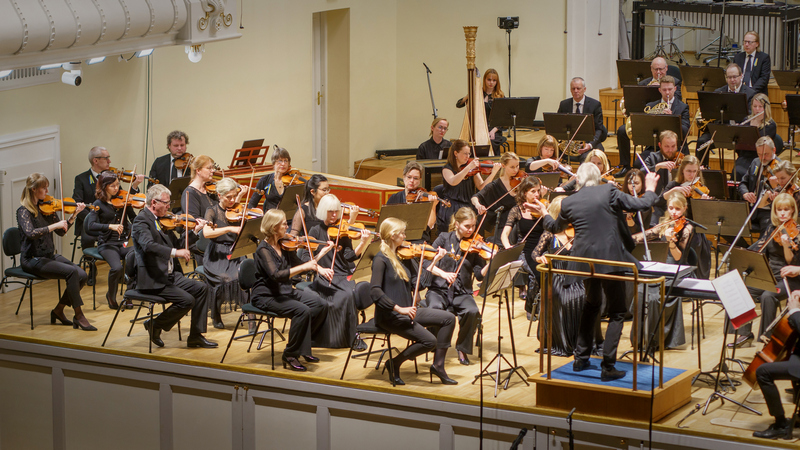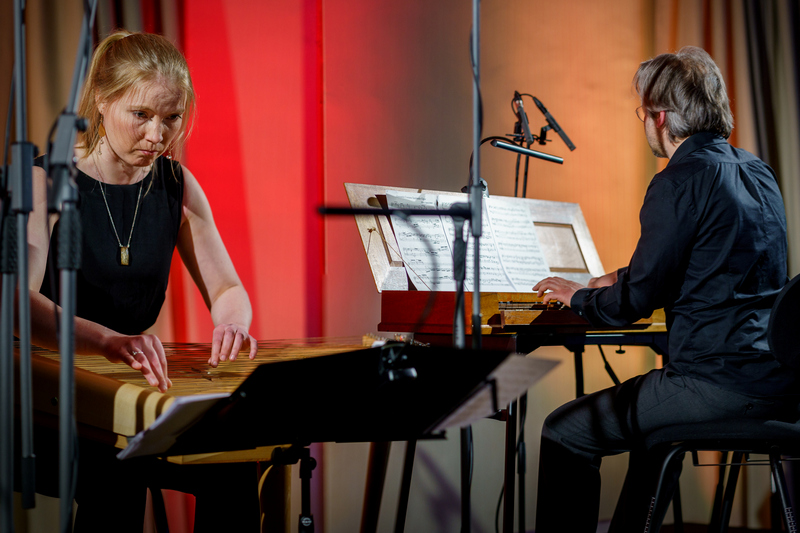
The most overwhelming event at this year’s Estonian Music Days festival was a concert at the Arvo Pärt Centre given by soprano Iris Oja, percussionists Vambola Krigul and Lauri Metsvahi, and Tammo Sumera on electronics. In some respects it feels difficult to write about this concert, as the scope, depth and intensity of each of the four pieces they performed meant that it was a more than usually demanding listening experience. (i usually dislike intervals in concerts, but on this occasion i could have done with one, just to have some time to draw breath and reset.) The most complex of the four works was House of Veils by Ülo Krigul who, a couple of days earlier, had been awarded Estonia’s prestigious Au-tasu composition prize. Beginning in a world of fragmented and garbled speech, the piece blurred perceptions of acoustic and electronic, while at the same time largely avoiding obvious structural markers. The result was an all-enveloping soundscape where we were forced to navigate for ourselves. i can’t help feeling that subsequent listens to this piece will result in entirely new trajectories and discoveries each time.
In Helena Tulve‘s Sool [Salt], the two percussionists not only provided a context for the soprano but also seemed to be acting as both barometer and thermometer, providing indications of her shifting internal temperature and pressure. In some ways it was the least focused piece in the concert, and while it was at times perhaps a bit too drifting for its own good, it nonetheless allowed its beautiful lyrical core space to speak, continually holding our attention. Fountain 2 by Tatjana Kozlova-Johannes was similarly meditative, establishing an exquisite glitterscape that, as in many of her works, operated as something of a steady state, exploring a tension of behavioural stasis and change.

From what i’ve previously heard of her music, Liina Sumera really should be featured at the Estonian Music Days more often. The première of her new piece La fontana malata was the most dramatic work in the concert, immediately immersing us in a calm world defined by percussion, from which Oja’s seamlessly emerging voice escorted us to a place of high drama with a distinct air of desperation. From here we ascended to the heights of a gorgeous, floating plateau. A hugely engaging work, it attained levels of intensity that seemed almost implausible, positively radiating power, losing none of that as it concluded in soft reverberance, as if being gently (but palpably) electrified. In terms of both its volatile drama and sonic imagination the piece brought to mind the timbrally explorative, highly-charged music of George Crumb. It’s extremely fortunate that the festival’s concerts are available to listen to or watch again; for this concert, one experience was definitely not enough.
It’s now almost a month since i returned from Estonia, and i’m going to conclude my thoughts about the festival with three pieces that have stayed with me especially strongly, two of them orchestral, the other an intimate chamber work. i can’t recall another occasion when i’ve been as simultaneously riveted and wrenched by a composition as i was with Maria Rostovtseva’s Calcium Cooke 1959. Premièred by the Estonian National Symphony Orchestra, conducted by Normunds Šne, the fact that it was some of the most arresting music i’ve heard in a long time only made it more outrageous when, after less then four minutes, the piece was over. Everything about it was encapsulated in its opening few seconds: a wonderfully huge smear answered (contradicted?) by a delicate harp arpeggio; crudeness and elegance rudely thrust together. What followed was similarly polarised, occupying an askew soundworld where the orchestra always acted as a large, single unit, their deliciously dirty, volatile form of lyricism ruined by noxious eruptions, ending up somewhere rather anguished. Its unexpectedly short duration only increased its power, both at the time and in retrospect. It’s music that i’ve been unable to stop thinking about, and I only hope that Rostovtseva is given the opportunity to write something a lot longer for the orchestra next time.

In the same concert – and its overwhelming highlight – was Dark Wings, a new work for percussion and orchestra from Tatjana Kozlova-Johannes, who consistently proves herself to be one of Estonia’s most fearlessly radical composers. The essence of her music is avant-lyricism in the midst of turbulence, and Dark Wings was a compelling new example of this. Though it featured a soloist (Vambola Krigul again), it was absolutely no concerto. Rather, the percussion – consisting, in contrast to the usual gargantuan kitchen (over)used in so much contemporary music, of just metallic percussion: suspended cymbals, gongs, glockenspiel and tubular bells – seemed to act in a dual role as both catalyst for and embellishment of the orchestra’s material. They were initially hazy, more the idea of a presence rather than an actual one, but they slowly formed into a distinct lyrical entity. The song that materialised was strange and shadowy, highly beautiful but also heavy and tragic. Often, what was going on beneath its surface was just as beguiling, including a curious rhythmic behaviour that my ears couldn’t quite fathom. Without anything resembling a conventional melody, Dark Wings nonetheless sang, sometimes as overlapping roiling waves, later as soft suspensions while gongs rang out above. As with all of Kozlova-Johannes’ music, though solemn and serious in tone, at its core it was deeply heartfelt, passionate and immediate.
The intermingling of abstract and emotionally-charged music heard at this year’s Estonian Music Days was in some ways epitomised by the curious fact that my own strongest emotional reaction unexpectedly came in response to simple, unassuming counterpoint, in a tiny chamber piece from the mid-1700s. The concerts given by Anna-Liisa Eller (kannel) and Taavi Kerikmäe (keyboards and electronics) have in recent years blended new and old, particularly featuring David Kellner, a German composer who lived and worked in Tartu, Estonia’s second largest city. Kellner’s short Aria dates from 1747 (the year before he died), and Eller and Kerikmäe performed it twice. At the start of the concert the focus was on Eller’s kannel, with Kerikmäe providing a soft accompaniment on harmonium. The combined effect was utterly exquisite, like the glinting of a tiny, precious gemstone. The second performance was a duet for clavichord and kannel, and although the piece was much smaller than before (Kerikmäe’s clavichord was extremely quiet), its affect was massively greater, a miniature song resonating with pure, simple beauty. It was the last music i heard at this year’s festival, and it brought me back full circle to when i had first arrived and begun contemplating the festival’s theme, “soul”. In a way that defies what words can adequately explain or describe, this miniature music had directly connected with and moved my soul.

These performances are all available to stream (for free) either as audio via Klassikaraadio and/or as video via the festival’s EMP TV service. Links below:
Oja / Krigul / Metsvahi / Sumera: audio / video
Estonian National Symphony Orchestra: audio / video
DUO Eller & Kerikmäe: audio
